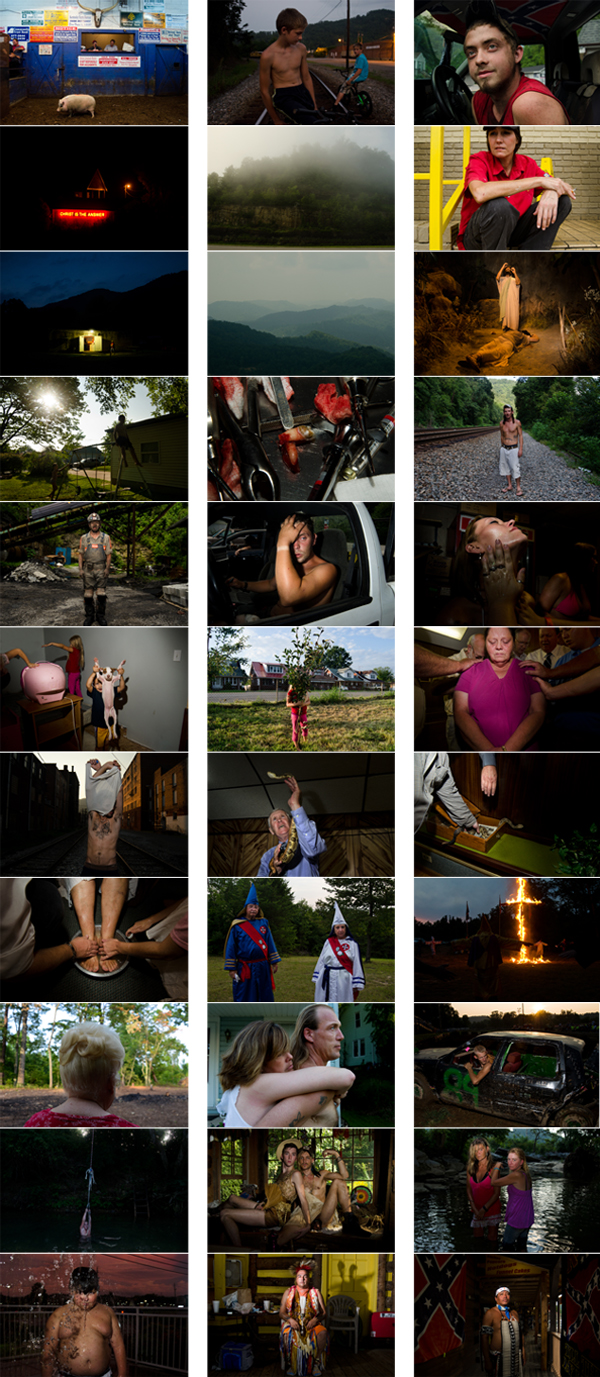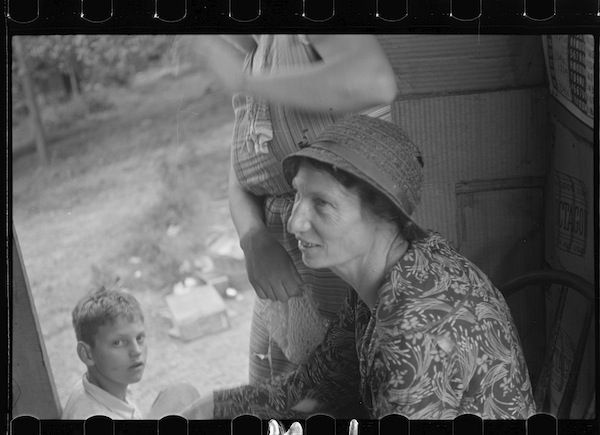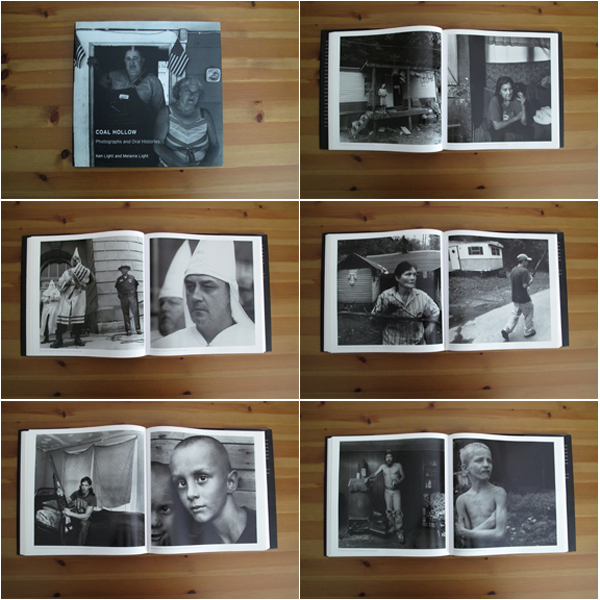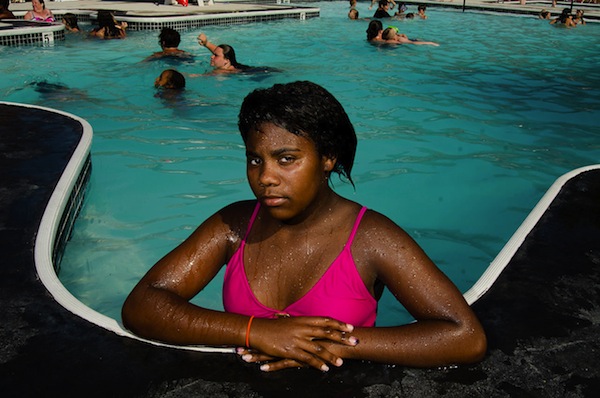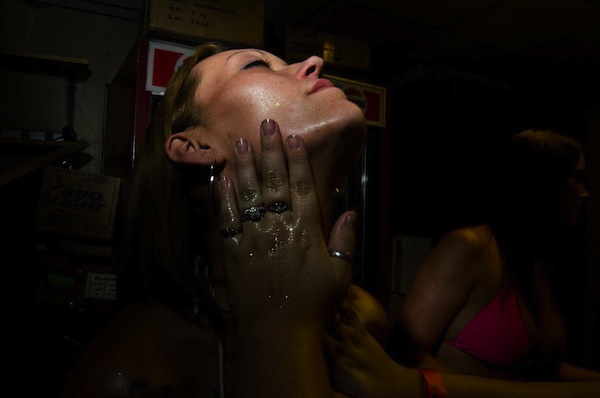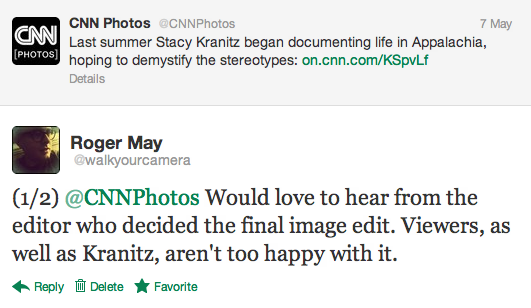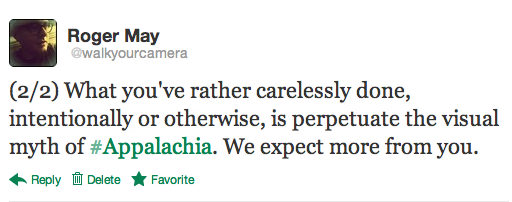The last couple of weeks have brought about several interesting online conversations about Appalachia and what it actually looks like. While some time has passed since CNN ran Stacy Krantiz's photographs, I think it's important to continue to the conversation about the broader visual representation of Appalachia. Before moving on, I want to share some additional thoughts on the CNN/Kranitz controversy. Last week, Kranitz sent me the 33 photographs she originally submitted to CNN (below). You can see the rest of her series from the project "Old Regular Mountain" here. From these, you get a clearer idea of what she chose to submit. What is still missing, however is why Kranitz chose these specific images.
Here's some of what she had to say about her original submission:
CNN asked for me to send images to choose from. They did not specify the amount. I sent 33 images. I sent two options for: Cherokee, North Carolina, the Snake Handlers in Jolo, Scenic views of the mountains, Old Regular Baptists, swimming holes, and the Klan - because I thought they were important representations to include.
CNN front-loaded their edit with, in my opinion, a sequence of images that set up the ensuing controversy that, let's face it, everyone expected. Was their goal to be controversial? Probably. Have they received a lot of clicks (by the way, clicks = advertisements = revenue) and comments about this picture story? Yes. One of the important things I've learned in writing about this specific instance (and there are many others) is that my own expectation of the media is unrealistic. I have gradually, and lazily, allowed myself to expect the truth from mass media, which is abhorrent and a whole different series of blog articles. Moving on...
In the days following, Kranitz said:
The photo editors at CNN responded and showed genuine concern for my desire to have the project presented in a way that was true to my intentions. While so much of the damage has already been done with so many people seeing the original sequence of images I appreciated that the editors where immediately responsive to my desires to change the edit to be more accurate to the project.
And the 16-image re-edit:
Finally, Kranitz has been nothing but transparent with me about the process and has taken responsibility (rightly so) for the fallout. I think there's something to be said for that. In all of this, the only public acknowledgement from CNN I've been able to locate is in an article by Poynter's Steve Myers:
CNN spokeswoman Erica Puntel said that CNN.com had chosen 16 of the 33 images Kranitz submitted, and that someone from CNN called to listen to her concerns. Puntel said by email:
[Kranitz] said that she had received a large amount of negative feedback and was concerned. She also said that she felt that the edit of the photographs did not represent her work in the way she had intended.
After some discussion, we agreed with her point that some people could misconstrue what she was trying to convey, and therefore, we changed it.
We must not overburden photography with something it cannot do - providing us with an accurate portrayal of anything. Instead, we must acknowledge the maker’s hand, and we should talk about its role - and our reactions.
But what about the framework of how we "look at" Appalachia? How has our view (yours and mine) been constructed? I think most of how we see pictures from Appalachia today coincide with the early War on Poverty images. Poor, white (and black) folks, shoeless, dirty, toothless, destitute. Charles Kuralt's 1964 CBS feature "Christmas in Appalachia" comes to mind. Any honest look at Appalachia would yield those sorts of pictures at any point in time. Pretending that poverty doesn't exist, or choosing not to photograph the systemic issues of poverty, don't simply make them nonexistent. Nor do they accurately represent a place as a whole.
Perhaps the intent of some of the historical images of Appalachia are more of a survey of poverty rather than a survey of Appalachia. But I think somewhere our cultural and visual lexicon has made the two synonymous; Poverty = Appalachia and Appalachia = Poverty. In order to deconstruct that myth, it's important to understand how it was constructed, which can't be done unless we take a long look at the history of extractive industry in Appalachia. Human resources have always been of lesser importance than the natural in Appalachia. Coal and timber have trumped, and continue to trump, the welfare of the people.
John Edwin Mason noted, in a recent email discussion, that at the time of the earlier Appalachian photographs, folks "weren't perhaps as sensitive to questions of representation as we are now." He pointed out that "War On Poverty photographers were overtly engaged politically --on the side of the angels, as people like me would see it."
And certainly photographs were being made in Appalachia prior to 1964.
Walker Evans - Farm woman in conversation with relief investigator, West Virginia, 1935.
Since the controversy of CNN's edit of Stacy Kranitz's photographs, I've taken a lengthy look at some of the Appalachian photobooks I have on my shelf in an effort to compare and contrast different photographer's work in the region. This is by no means a complete list, but by spending some time in the four books listed below, some common themes about how Appalachia is represented emerged. For example, three of the four photographers are not from Appalachia (insider vs. outsider). Two of the four books include images of the KKK (stereotypical). None of these works tell the complete story of Appalachia (nor would I suspect their authors to claim), but rather their own idea and image of Appalachia. I would argue that there are elements of truth in all of these, but as Colberg points out again in "Photography and Place":
Even if we assumed that it was possible to get that infinity of photographs of a place, two people would probably still come to very different conclusions. Just imagine someone living in the place and someone visiting. And that would be just the most obvious difference one could think of. As I’ve already argued elsewhere our perceptions of photography are very much based on what we bring to the table, our personal, cultural, political biases.
Some Appalachian photobooks:
Ken Light's Coal Hollow 2006, University of California Press Hardcover | 152 pages | 11x11"
Rory Kennedy's American Hollow 1999, Bullfinch Press Hardcover | 128 pages | 8.5x11"
Rob Amberg's Sodom Laurel Album 2001, University of North Carolina Press Hardcover | 192 pages | 10x9.5"
Builder Levy's Images of Appalachian Coalfields 1989, Temple University Press Hardcover | 144 pages | 7.5x9.5"
 Moving forward, I'll be writing more about the broader visual representation of Appalachia, looking at more photographs - new and old - from the region, and hopefully fostering good conversation about how and why we look at Appalachia and what that means.
Moving forward, I'll be writing more about the broader visual representation of Appalachia, looking at more photographs - new and old - from the region, and hopefully fostering good conversation about how and why we look at Appalachia and what that means.
